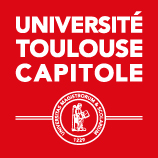- Research,
"Machine learning as a playground" : discover our interview with computer scientist Julien Aligon (IRIT)

on the May 24, 2023
Julien Aligon is a lecturer at the Faculty of Computer Science of UT Capitole and has been a member of IRIT since 2016. His research is applied to the healthcare industry. Meet this machine learning enthusiast.
• Can you tell us about your main research areas?
I completed my thesis in 2013 at the University of Tours on the recommendation of analysis queries in systems managing large databases. I worked on this same concept during my post-doc at Nantes University, but for the analysis of heritage objects. At UT Capitole, my research is mainly applied to the health sector, in keeping with the work with Inserm initiated by my colleague Chantal Soulé-Dupuy. The initial goal was to recommend predictive models appropriate to the needs of doctors and biologists. But it was impossible to explain why the model was recommended. This is why, more recently, we started to specialize in explainability for predictions (XAI).
• What project are you currently working on?
My current research project is to make data analysis intelligible. To achieve this, I see the explanation of predictions as a new data space to be explored. These explanations are potentially very numerous, which means that we need to do a proper search to find the most salient ones. This work is divided into four areas, corresponding to four theses that I am co-supervising until 2024. Two are being conducted with the RESTORE laboratory, which specializes in the analysis of ageing and for which I am the scientific correspondent. The other two are CIFRE theses, in collaboration with the companies Kaduceo and SolutionData.
About IRIT |
About RESTORE |
• Can you tell us about the patent that has just been filed?
Yes, a patent held by RESTORE and associated with two IRIT teams (SIG and REVA) has been registered by Inserm Transfert in co-ownership with UT Capitole. This prototype predicts the physiological age of patients by automatically identifying ageing factors specific to certain populations. Thanks to a machine learning model that learns from the biological data of 80,000 individuals monitored in the United States and relates it to their clinical age, we have been able to predict a personalized physiological age that can be explained.
• What do you gain from interdisciplinary work?
When participating in an interdisciplinary research project, the challenge is to speak the same language. Interaction with the RESTORE team was greatly facilitated by people who excel in their medical field and who are also familiar with machine learning. This generates mutual respect and a wonderful complementarity: we conduct research in computer science applied to a biology context and the doctors analyze ageing using the tools we have developed.
We conduct research in computer science applied to a biological context and doctors analyze ageing using the research we have developed.
• How does your research fuel into your teaching activities?
In some of my courses, I give introductions to machine learning. Doing research in this field allows me to present concrete examples, which can even become exam subjects. I'm also very careful to explain the subject in layman's terms, particularly to MIAGE students, while remaining demanding. I use this approach when I work with biologists. So teaching also has beneficial aspects for my work as a researcher.
• What other collaborations do you have in mind?
In order to pursue my research in the healthcare sector, I would like to develop collaborations with the Toulouse University Hospital, where I am sure the issues are similar. There are also many projects to be carried out with UT Capitole jurists, particularly in the context of the AI Act (for the regulation of artificial intelligence), which is being promoted at European level.
Updated on June 5, 2023
